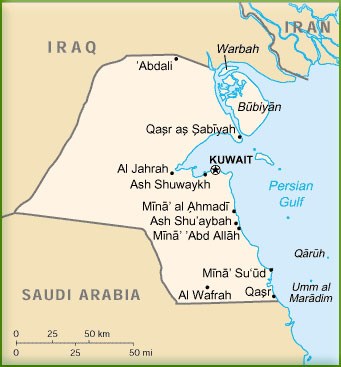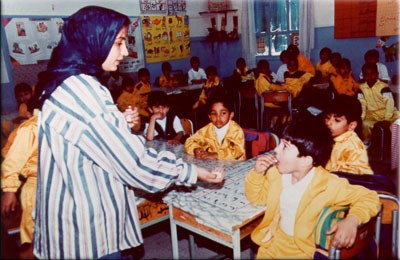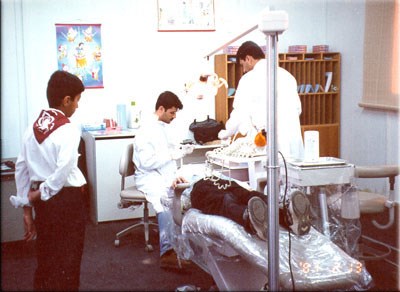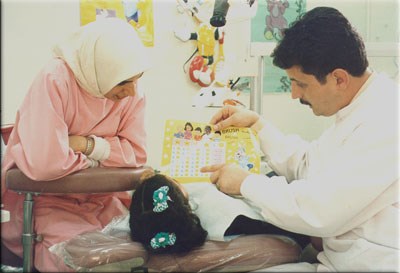Kuwait - Community Based Schoolchildren's Oral Health Programmes 1985 -1998
Kuwait - Community Based Schoolchildren's Oral Health Programmes 1985 -1998
Introduction
Kuwait has a national health programme for all citizens. However, prior to 1985 no routine oral care was available in Government facilities for kindergarten and primary school children. Subsequently, state funded school based oral care programmes, managed by different external foreign academic institutions, for kindergarten and primary school children in Kuwait, were implemented in four health regions in Kuwait. Adan Al Ahmadi (A School based Oral Health Programme 1986-1997) and Farwaniya Regions were managed by the School of Dentistry, University of Copenhagen; Hawally Region was managed by the College of Dentistry, University of Kentucky; and Jahra Region was managed by Forsyth Dental Center, Boston. The fifth region, the Capital, was managed by the Ministry of Health. This presentation is based on the analysis of the above-mentioned programmes by Morris and co-workers published in 2004.

Map from the World factbook
Background and Rationale
The first children's oral health programme was an evening clinic based programme in the Capital Region, then followed by a school based programme for kindergarten and primary schools in the Adan Region. The war situation in Kuwait (1990-91) greatly reduced the progress of oral health overall. Clinics were destroyed, equipment lost or destroyed and human resources diminished. The Government therefore in 1991-92 defined new strategies and goals to strengthen the oral health services, reduce disease, and improve care, with emphasis on Kuwaiti children. This led to the implementation of three additional state funded school based oral care and prevention programmes for kindergarten and primary school children. These were managed by different external academic institutions in the remaining health regions without coverage (Farwaniya, Hawally and Jahra). The Adan and Capital Region programmes were restarted and strengthened. The total target population was 149, 205 children.

Schoolteacher distributing fluoride lozenges to children in primary school.
Programme Descriptions
Adan Al Ahmadi and Farwaniya Regions
School-based with single operator and assistant teams. Routine restorative care, organised prevention using fluoride mouth rinses, supervised fluoride toothpaste brushing at school, fluoride toothpaste brushing at home, oral health education, and sealants included in the programme after 1993.
Hawally Region
School-based with multi-dentist teams (dentists, hygienists, and assistants). Programme consists of movable equipment used in schools, supportive central clinic, preventive coverage for all children from the start of programme, fluoride supplement (lozenge) during school days, periodic fluoride rinses before and after school holidays, fluoride toothpaste brushing at home, oral health education, sealants, composite fillings and stainless steel crowns for primary teeth and with minimal amalgam use.
Jahra Region
School and central clinic based programme with restorative and some endodontic care, prevention using topical fluoride gels to a limited age group (perceived fluorosis problem in this region), fluoride toothpaste brushing at home, oral health education and sealants.
Capital Region
Evening clinic-based with single operator/assistant team. Restorative care, prevention based on topical fluorides, fluoride mouth rinses, fluoride toothpaste, oral health education, and sealants.

Dental assistant giving oral health education to school children.
Achievements
The trends of increasing caries appeared stabilised and reduced in the Adan Al Ahmadi, Farwaniya and Hawally programmes following the implementation of these programmes. Data were not available for the Capital, and some data were available for Jahra Region on health outcomes.
- The percentage of caries free children in the primary dentition of ages 4, 6 and 9 in the Hawally programme increased 25%, 37.6% and 30% respectively and among the 6 year-olds in Farwaniya programme increased by 20%.
- The percentage of caries free children in the permanent teeth of children ages 6 and 9 years stabilised or increased in Adan, Farwaniya and Hawally programmes.
- Reduction in the dmft index for 4, 6 and 9 year olds in the Hawally region by 6.9%, 8.4% and 9.4% respectively and stabilisation in the 6 year olds in Adan programme.
- Increase in the F: DMFT ratios of 9 year olds in the Adan, Farwaniya, Hawally and Jahra programmes.
- Percentages of teeth with sealants progressively increased in all 4 programmes.
- In the Adan Region, where sealants were not routinely applied at age 6-7 before 1994, a 23.8% increase in caries-free permanent teeth of 9 year olds in one year was observed in 1997-98 over the previous year's cohort.

Mobile dental team, set up in a primary school.
Conclusion
The government has successfully implemented school based oral health programmes for Kuwait kindergarten and primary school children in all regions. Twenty-eight percent of government employed dentists are assigned to these disease prevention and care programmes. In those regions where aggregate data were available for analysis, rising disease trends were stabilised and then reduced overtime. The school based programmes managed by the external academic institutions provided services and benefits at less cost per child than the clinic based Ministry of Health evening programme.

Oral hygiene instructions being given to child from school.
Reference
Morris RE, Al Za'abi F, Behbehani J, Gillespie G, Al Mahmeed B. Community based schoolchildren's oral health programmes, Kuwait 1985-1998. Int Dent J. 2004;54:241-9. Abstract PubMed.
Acknowledgements
Dr RE Morris and Dr G Gillespie are acknowledged for providing us pictures and for supporting us with details about the programme.
